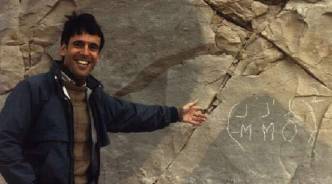
Research in our
group involves the
theoretical study of molecular collisions, particularly those involving free
radicals, the photofragmentation of small molecules, and the structure and energetics
of weakly bound complexes involving open-shell species. Our
interest is the coupling of the vibrational and rotational motion of the nuclei
with the spin and orbital motion of the electrons. Of particular
recent interest is a new
quantum flux method for the study of the detailed mechanism of
photofragmentation and energy transfer. Within the past several years
we have developed a new code to treat, fully quantum mechanically, abstraction reactions involving
multiple electronic potential energy surfaces.
Current investigations include:
a) The effect of spin-orbit coupling in the reaction of
halogens (F and Cl) with hydrogen (for example: F+H2 → HF + H).
b) The effect of multiple potential energy surfaces in product branching in the
reaction of O(3P) and S(3P) with H2 and in the quenching of
OH(A2Σ) by H2.
c) The fully-quantum investigation of reaction and relaxation of the OH radical by collisions
with O atoms.
d) The assignment of the bend-stretch levels of weakly bound
complexes such as BH-Ar, CH-Ar, OH-Ne, NH-Ar, B-Ar, and B-H2.
e) The development of new methods for the determination of the structure
and energetics of complexes involving an open-shell atom imbedded in noble gases or molecular
hydrogen
Our work has been instrumental in interpreting experimental work done in the groups of
Xueming Yang (Dalian, China)
and
Daniel Neumark (U. C. Berkeley). This work has been highlighted recently on the
homepage of the College of Chemical and Life Sciences
at the University of Maryland, in a
perspective article in
Science by Professor Joel Bowman of Emory University,
in a general interest
article in Chemistry World and another
article in Chemical and Engineering News.

This work involves quantum scattering calculations using our
Hibridon
code for inelastic collisions, as well as, for reactive collisions, with our
extension to multiple potential-energy surfaces of the
ABC code of Manolopoulos, Skouteris and Castillo, and
high precision
ab initio determination of molecular potential energy surfaces
using the
MOLPRO code of Werner and Knowles. The calculations are done on Apple G5 and Intel Xeon
workstations and servers in our own group as well as on the
Deepthought cluster of Linux Xeon servers at the University of Maryland.
For the past 25 years our research group has had exceptionally close ties and joint funding with the
experimental group of Paul Dagdigian at The Johns Hopkins University. In addition
we have long-standing collaborative contacts with the theoretical groups of
Hans-Joachim Werner at the
University of Stuttgart (Germany) and
David Manolopoulos at Oxford University (UK).
 Research in our group involves the
theoretical study of molecular collisions, particularly those involving free
radicals, the photofragmentation of small molecules, and the structure and energetics
of weakly bound complexes involving open-shell species. Our
interest is the coupling of the vibrational and rotational motion of the nuclei
with the spin and orbital motion of the electrons. Of particular
recent interest is a new
quantum flux method for the study of the detailed mechanism of
photofragmentation and energy transfer. Within the past several years
we have developed a new code to treat, fully quantum mechanically, abstraction reactions involving
multiple electronic potential energy surfaces.
Research in our group involves the
theoretical study of molecular collisions, particularly those involving free
radicals, the photofragmentation of small molecules, and the structure and energetics
of weakly bound complexes involving open-shell species. Our
interest is the coupling of the vibrational and rotational motion of the nuclei
with the spin and orbital motion of the electrons. Of particular
recent interest is a new
quantum flux method for the study of the detailed mechanism of
photofragmentation and energy transfer. Within the past several years
we have developed a new code to treat, fully quantum mechanically, abstraction reactions involving
multiple electronic potential energy surfaces.
 This work involves quantum scattering calculations using our
This work involves quantum scattering calculations using our